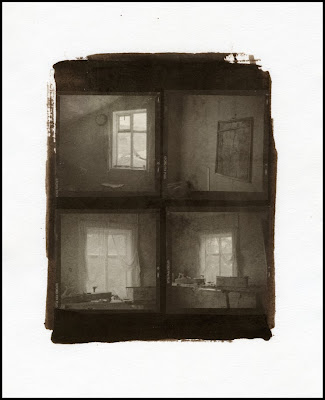Hi, Cody,
HI Doug,
Correct me if I'm wrong.
Grayscale is a range of shades of gray without apparent color. The darkest possible shade is black, which is the total absence of transmitted or reflected light. The lightest possible shade is white, the total transmission or reflection of light at all visible wavelength(s)
Now if we know that Black has the ability to form different shade of Gray by the introduction of White.
Let me intrude right here to reflect a little on matters of colorimetry and photometry.
It is important that we distinguish between the color of light and the reflective colors of surfaces.
For example, in light, there is no such thing as "gray". There is white light of differing luminance.
We might have white light from the sun at midday, and later in the day, light of 1/10 the luminance - but it will still be white light. There is no gray light.
But of course we are speaking of printed images, where it is
reflective color that is of interst.
There, we tend to consider a surface whose reflectance is uniform over the visible spectrum, and whose absolute reflectance is in the general area of 1.0, as "white". If instead, we have a surface whose reflectance is uniform over the visible spectrum but whose absolute reflectance is substantially less than 1.00, we call that gray.
Now if we had a surface whose reflectance is not uniform over the visible spectrum, we can describe that in terms of its "reflective chromaticity", which is a property we can express in several ways. One way is in terms of
hue (this distinguishes, for example, "blue" from "red") plus
saturation (distinguishes "red" from "pink").
Now, if we start with a certain reflective color, and decrease its reflectance at each wavelength over the visible spectrum proportionately, its chromaticity will remain the same but its lightness will decrease. If it was "some sort of blue", it is now "some sort of darker blue".
Now if I understand all this 255,255,255 numbers, they are just a recipe to produce a color, just like a artist mixes paints.
So basically if you start off with a Deep Blue paint or in our case with printers we have ink.
So if you add X amount of white you get one shade lighter of blue and so on down to pure white, or in our printers case what ever color our white paper is.
Keep in mind of course that in the case of a printer we are dealing with a "subtractive" color model rather than the "additive" model that pertains to the color of light.
So, of course, what you describe is not done by the printer adding white ink to the mix, but rather by us (some place in the whole chain) doing something that will, in the printer, cause a decrease the amount of (for example) blue ink. But I certainly follow what you are saying.
So in simple terms since our printers only have the Term print in gray scale, any color scale would be a Gray scale to a printer.
I am not at all attracted to calling a range of reflective colors that (perhaps) have a constant chromaticity, but not the chromaticity of white, "gray scale", regardless of what settings we may have made in teh poriunter to cause that..
I am not familiar with printers where the printer driver offers the option of:
• Printing in "grayscale", and
• Doing that with an ink color other than black.
But evidently there are such. Not having seen one, I am at a bit of a disadvantage.
I understand your concept that printing an image in different reflectances of the same chromaticity, but not a white chromaticity (sorry to say it in such a complicated way, but we have to be clear as to what we are talking about) is very
parallel to printing it in gray scale.
But the term gray scale has a well-respected meaning (and an obvious one), and I see no need to stretch it.
Riding a mule is very parallel to riding a horse, but I would not want to argue for calling it "horse riding".
Best regards,
Doug





